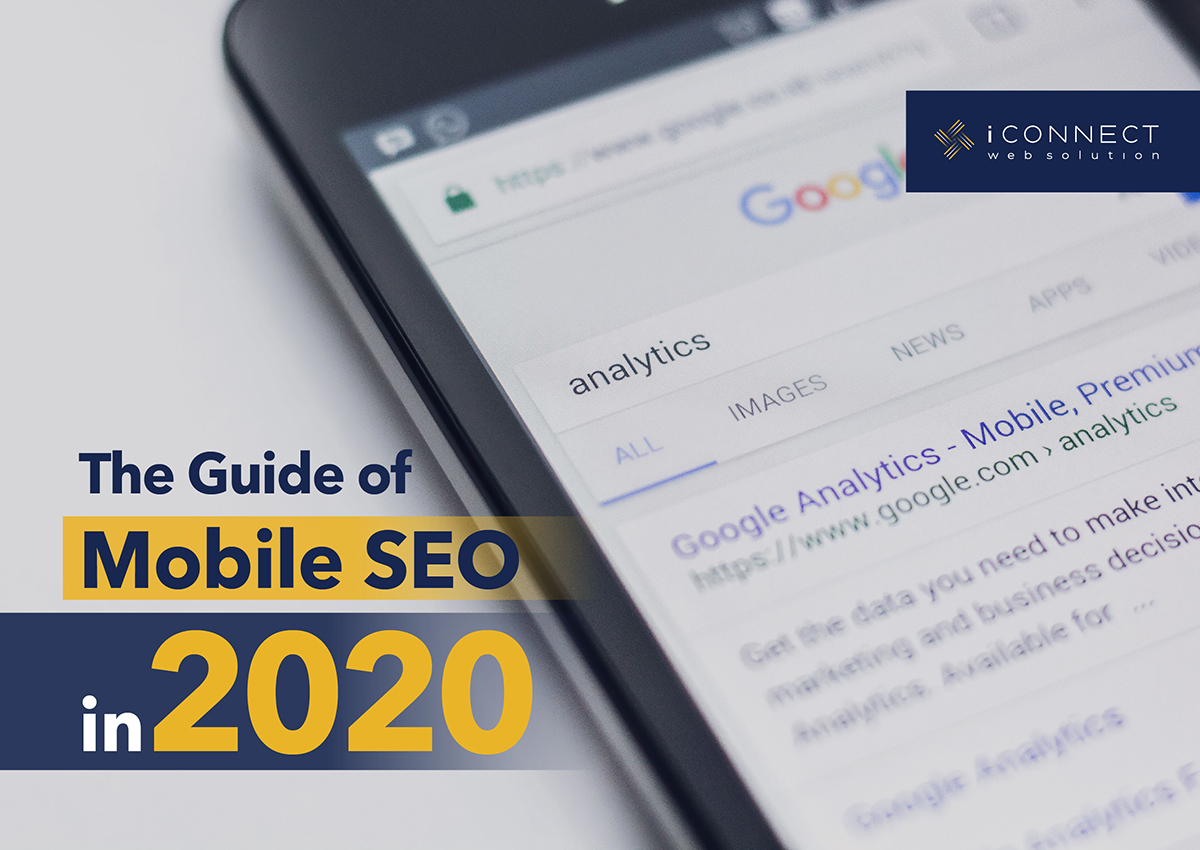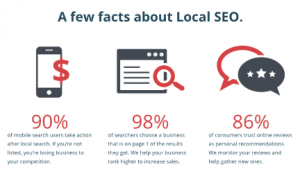

Mobile phones form a great part of our everyday life today. Did you know mobile devices can increase the number of generated leads and the sales you make? If you are ignoring mobile SEO in your digital marketing efforts then you are losing a lot of potential clients. What more could tell you the importance of mobile marketing than Google, the search engine itself – Google has a new tweaked and updated algorithm for mobile search.
If you do not adopt mobile SEO in 2020, there’s a reasonable chance that your site is practically invisible to the search engines.
To help you keep up with the changing trends of SEO and Google’s new mobile index (more on that later), we have put together this guide for you.
Don’t worry if you are a beginner, in this article, we will cover:
- What is Mobile SEO
- Why mobile SEO is important
- Factors that Influence Mobile SEO
- How to Implement Mobile SEO strategies
So, let’s get started!
Mobile SEO – What Is It?
SEO stands for search engine optimization, hence, mobile SEO stands for mobile search engine optimization. This is an online marketing strategy to enable high search engine rankings. You optimize your website content and make it mobile friendly to rank higher on search engines like Google, Bing, Safari, Explorer, etc. Mobile SEO will increase your ranking which ultimately attracts more traffic to your site and increases lead generation. This is also referred to as mobile friendly SEO.
There are many Search engines, however, when it comes to SEO optimization Google is the most important one because it takes up around 92% of the total search engine market (source: StatCounter).


Image source: https://gs.statcounter.com/search-engine-market-share
Let us see how and why mobile SEO can make or break your online presence.
Mobile SEO – Importance
As stated before, search engine optimization increases your search engine ranking which enhances lead generation, traffic and attracts more customers and sales – ultimately giving you more profit. Hence, SEO trickles down to the root and makes your business flourish over time. However, it’s easier said than done because SEO is a complex and multifaceted concept which depends upon different elements. One element being Mobile SEO itself.
See, mobile searches today make up 95% of total searches on Google (source: Blue Corona) – that’s a huge figure!
This means that if you are ignoring mobile SEO then there is a remote chance that Google algorithm will recognize you and add you to the top rankings. In short, no ranking means less traffic which means lesser leads, conversion rates, customers, sales and profit.
Mobile SEO – The First Step
If you want to reap the benefits of mobile SEO then the first thing you need to do is an audit. Find out how much mobile traffic you are currently getting on your website. Well, website owners should already know that the best way to analyze the performance of your website on Google is Google Analytics.
Now follow these steps:
- Login to your Google Analytics account
- Navigate to “Audience”
- Now go to “Mobile”
Now, you can see the data comprising the figures and percentages of the total traffic that your website receives through mobile devices, desktops, and tablets.
Once you look at the figures, in most cases you’ll realize that even though your website is not mobile optimized yet you generate more traffic through mobile devices.
The reason is that mobile search is on the rise and people prefer using their phone instead of going through the hassle of opening their laptops, logging in, launching the browser and then typing the search query.
This is the perfect opportunity for you to make the most of this mobile friendly check of your website. Imagine how much traffic you can get when you start implementing mobile SEO strategies!
Let’s move on to a key concept here when we talk about mobile SEO.
Mobile SEO – Google’s Mobile-First Index
Since mid-2019, Google adopted the mobile-first index. This is a new metric for Google to determine its search ranking based on the quality of the mobile version of a website first. While most of our digital marketing efforts are concentrated on the desktop website, we are missing the main objective.
The reason why Google switched to the mobile index is that most searches are made via mobile devices now as they are more relevant now. The new Google bot analyses the performance, content and experience design of your website for the mobile searcher. Thus, to meet the users’ intent Google prefers mobile friendly sites.
In essence, to meet the new ranking criterion for Google i.e., Mobile-First Index, you must use mobile SEO. You can’t offer your website version for mobile phones anymore as it will leave a bad impression on Google’s algorithm and badly affect your rankings.
Mobile SEO – How to Implement It?
Here are some easy, quick and cost-effective fixes to help you optimize your website for mobile searches:
Site Speed
Mobile page speed helps determine the quality of your website and the user experience. According to statistics 25% of visitors leave the website and go to the other one if it does not load within 6 seconds. (source: HubSpot) So, improve site speed to ensure a speedy page load time. You can also create a Google AMP to make your web pages load quicker on a mobile device. AMP stands for Accelerated Mobile Pages and it is a new project by Google which allows you to load a webpage in less than a second!
Content Optimization
Content is the counter-stone of SEO. Create original, engaging and relevant content that will meet the user’s interest. Use long-tail keywords and rich snippets. Content usually comes in the development process, however, if you already have a website running, you can always add new stuff and revamp it to meet the changing trends.
Optimize for local search
Local searches are the ones that contain a location-specific intent in the search query, for example, “coffee shop near me”, “electrician in my area” or “best local pizza” etc. Many latest statistics and researchers prove that a great number of visitors actually visit or call the local businesses they find on mobile searches.


Hence, if your business is not optimized for local search then you are missing a lot of customers. A simple way to start is by getting listed on online directories and Google My Business.
Boost Responsiveness
Make your website mobile-friendly – make the layout flexible, add lucid images, create seamless site viewing and add internals links and redirects. Making your website responsive will improve your mobile SEO optimization efforts.
Increase UX and UI
Make your website interface (UI) and user experience (UX) user friendly. Ignoring customers is one of the biggest mistakes when it comes to SEO in general. The UX and UI are the key components of enhancing the visitors’ website experience. They would be able to use your website smoothly and easily. So, optimize UI and UX for mobile SEO by focusing on the site design, content, CTA option, buttons, typography, etc.
Conclusion
Smartphones add ease and convenience of accessing the internet right from the palm of our hands. We live in a busy digital world today where everyone is always on the go. Thus, mobile usage along with mobile searches are skyrocketing now. To meet the user’s demand and Google’s Mobile-First Index, you must optimize your site for mobile SEO to succeed online in 2020.
